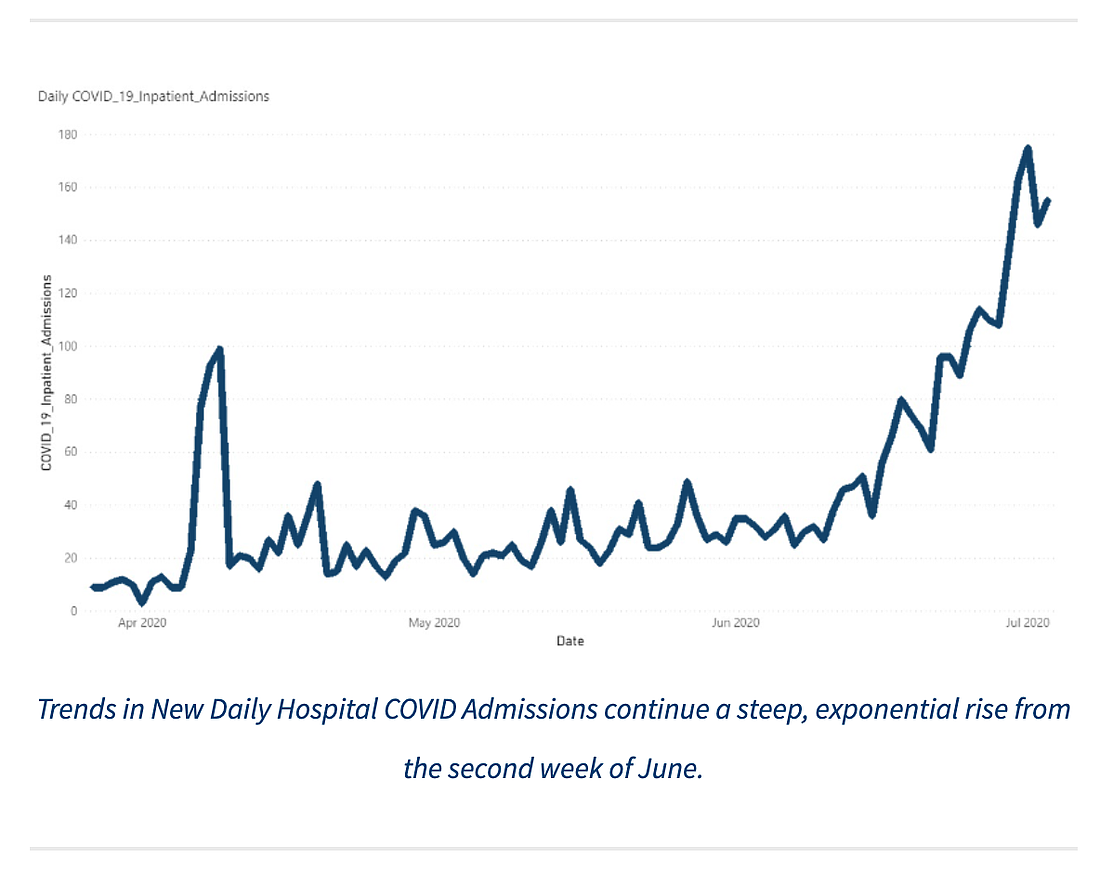- April 1, 2025
-
-
Loading

Loading

A professor at the University of South Florida’s Muma College of Business is leading a project that aims to give public health officials and policymakers a new tool for predicting and combating the spread of COVID-19 in the Tampa Bay region.
Matthew Mullarkey’s Project ASPeCT — which stands for Anonymized, Systematic, Population, e-Geofenced, Contagion, Training model — collects and analyzes mobile device movement data to forecast surges in the number of coronavirus cases. The information gleaned from the region’s 3.5 million mobile devices is provided to Mullarkey’s team by a third-party mobile data aggregator, but Project ASPeCT then takes a deep dive into it. Data scientists extract mobility patterns that reveal not only how far people are traveling, but the number of unique and — crucially — densely populated locations they visit.
Mullarkey, in an overview of the project published by the Tampa Bay Partnership, says mobility indicators, or lack thereof, provide a clear, hyper-local picture of the future.
“When we see a spike in movement, 21 days later we see an increase in COVID-19-related hospitalizations in the Tampa Bay region,” he states. “Movement is a very localized phenomenon with different regions — even in the same state — exhibiting very different patterns. Knowing movement for Miami does not necessarily help health care officials in Tampa Bay anticipate demand.”
Around Memorial Day weekend in late May, when Florida’s economy was in the early stages of reopening, there was — predictably — a noticeable uptick in mobile device movement. Moreover, most devices were shown to have visited two dense locations per day. As May gave way to June, movement increased substantially.
“Half our population has now gone from two to almost eight dense locations per day on average,” Mullarkey states, “putting themselves at significant risk of coming into contact with someone with the virus.”
The mandatory mask orders issued by counties and cities in recent weeks have begun to curb some of that movement, though, according to Project ASPeCT.
“The outcomes are up to us, depending on how aggressively we address behaviors,” Mullarkey says. “If enough of us take seriously our ability to limit our level of exposure, we will reduce the rate of spread of this virus dramatically in our region.”